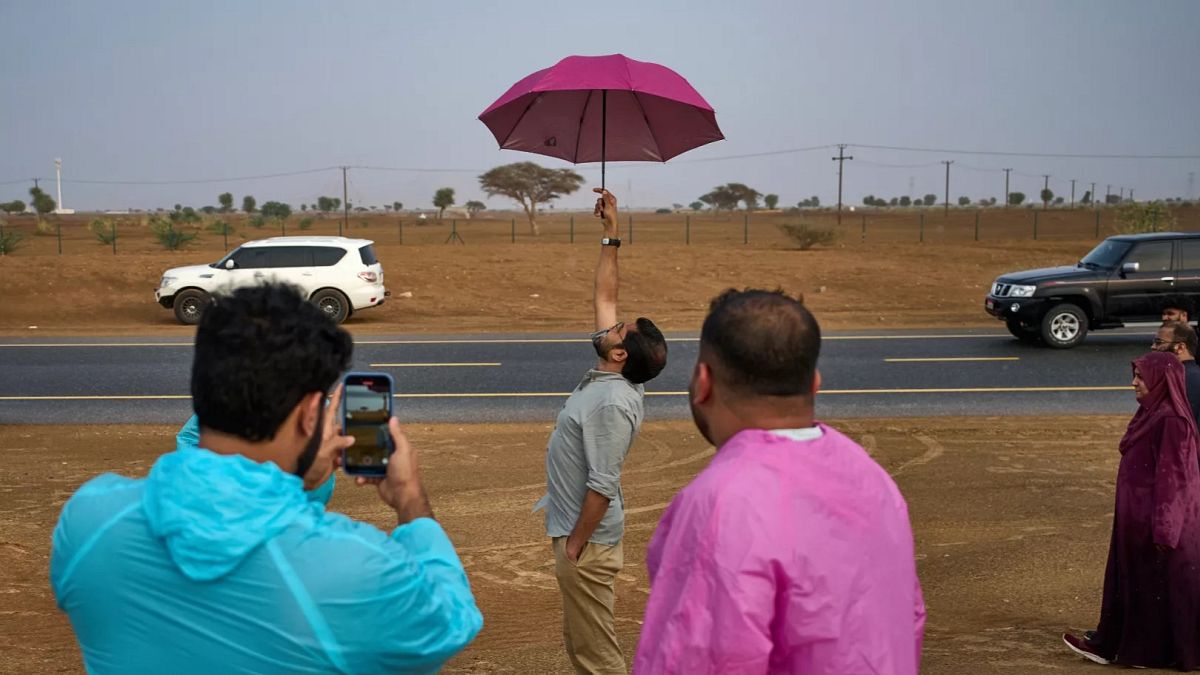

In the evolving tapestry of our global climate, rain and fire, two seemingly contrasting elements, are rewriting narratives across different regions, particularly in the Middle East and North America. The United Arab Emirates (UAE), for instance, finds itself on a delicate tightrope, balancing between the thirst for rain and the challenges it brings, while regions prone to wildfire outbreaks grapple with the growing menace of lightning-induced fires, exacerbated by ongoing climate shifts.
The UAE, predominantly arid, looks towards rain with anticipation and caution. Here, water scarcity is a palpable concern, driving innovative solutions like cloud seeding. This technique, which involves dispersing substances into the atmosphere to encourage precipitation, offers a hopeful answer to the region’s water woes. However, this blessing sometimes arrives with a stark reminder of the natural world’s unpredictability. Alongside the much-needed hydration, intense rainfall can swiftly turn into flash floods, posing risks to infrastructures and communities.
Cloud seeding, surfaced as an essential practice in the UAE, underscores a critical dialogue about water management in arid climates. The process is emblematic of not just technological advancement but also of the persistent challenges faced by rapidly urbanizing desert landscapes. Each drop from the seeded clouds is a testament to human ingenuity and the ever-present need to prepare for nature’s varied responses.
Thousands of kilometers away, in the sprawling wilderness across North America, another weather-related challenge looms large: the increasing frequency of wildfires ignited by lightning strikes. Scientific studies underscore a worrisome trend — as climate changes accentuate, so does the propensity for these naturally occurring sparks. Lightning-caused fires, often starting in remote areas, can evolve swiftly, fueled by dry conditions to become larger than those started by human hands. This not only raises alarm for environmental safety but also exacerbates public health concerns through increased smoke and deteriorating air quality.
The landscape of wildfires, shaped by the climate crisis, paints a somber picture of nature’s raw power. The fires, fueled by intense weather patterns, remind us of the importance of understanding these phenomena deeply. As studies reveal, the foreseen rise in such fires over the coming decades not only threatens ecosystems but also impacts human health, driving home the interconnectedness of our climate systems.
Both narratives — the floods of the UAE and the fires of North America — highlight the crucial need for global attention on climate resilience. They stress the importance of not just scientific intervention, whether through rain induction techniques or improved wildfire management strategies, but also the critical need for communal awareness and global cooperation. The scenarios present lessons that emphasize the delicate balance required in addressing and mitigating climate impacts, encouraging action driven by understanding, preparedness, and innovation.
The unfolding climate challenges serve as a call to mindfulness, urging communities to foster harmony with the environment. As we take strides toward sustainable futures, let each instance of rainfall and each wildfire not merely be seen as a threat but as vital reminders of the symbiotic relationship shared with our planet. Addressing these elements with foresight and care remains vital to nurturing a world that thrives even amidst evolving climate scenarios.
Source: {link}
